I often get asked about the role of salt in baking, especially kosher as that is what I prefer. Salt is not just a flavor enhancer, but it also plays a vital role in the baking process. In fact, it’s one of the four essential ingredients in bread – flour, salt, yeast, and water.
When it comes to baking, salt has several functions that go beyond just adding taste. For instance, salt helps stabilize the yeast fermentation rate and strengthens the dough, which is important for achieving the right texture and consistency.
So, the next time you’re baking, don’t overlook the importance of salt! It’s an essential ingredient that can make all the difference in the final product.
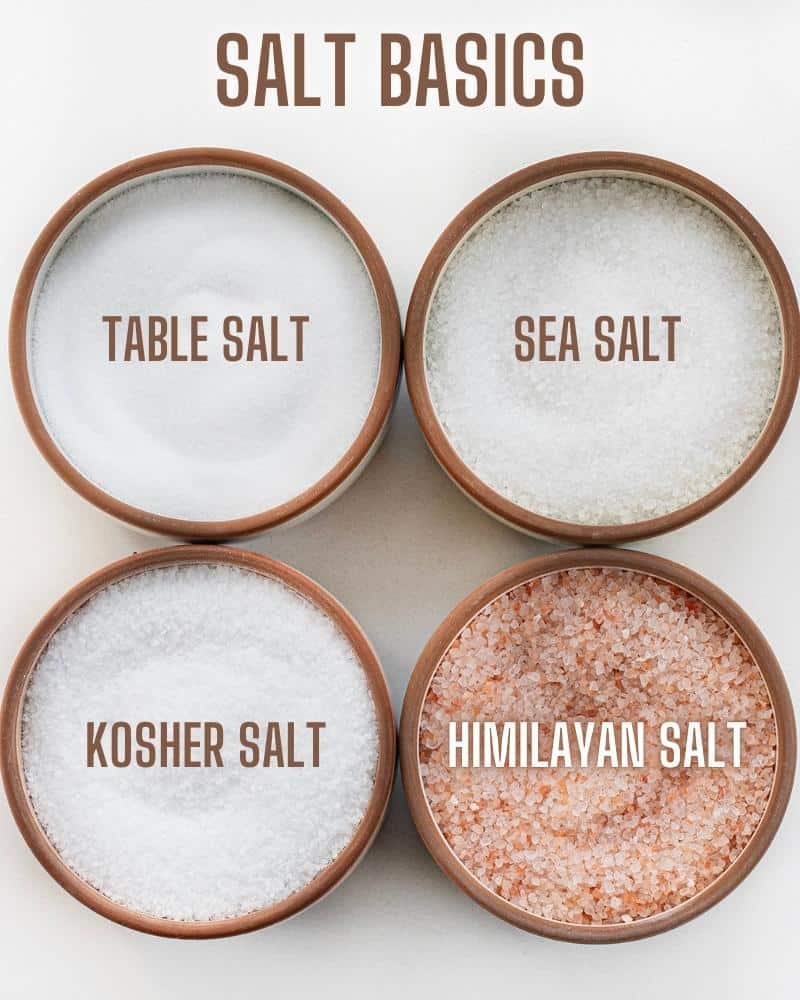
What is Kosher Salt?
Kosher salt is salt that has large, irregularly shaped grains. It is named after what it was used for, the traditional Jewish practice of koshering meat. This method is an important tradition in Jewish cooking that helps remove the blood from the meat. Kosher salt has larger, flaky crystals that can draw out liquids from the meat, making it easier to rinse off. After the meat is salted, it’s washed to remove any extra salt and liquids.

Why Use Kosher Salt in Baking?
Kosher salt is a popular ingredient in baking because it has a unique texture that can enhance the flavor and texture of baked goods. I prefer the flavor of kosher salt over table salt as it is a slightly milder taste, which can enhance the overall flavor of baked goods without overpowering other ingredients.
- Larger grain size makes it easier to control the amount of salt that is added to recipes, resulting in more consistent results.
- The larger crystals dissolve more slowly than table salt, allowing for a more even distribution of salt throughout the dough or batter.
- Kosher salt is also free from additives such as iodine, which can sometimes affect the taste of baked goods. Keep in mind that different brands of kosher salt may have slightly different grain sizes, which can affect how much salt is needed in a recipe.
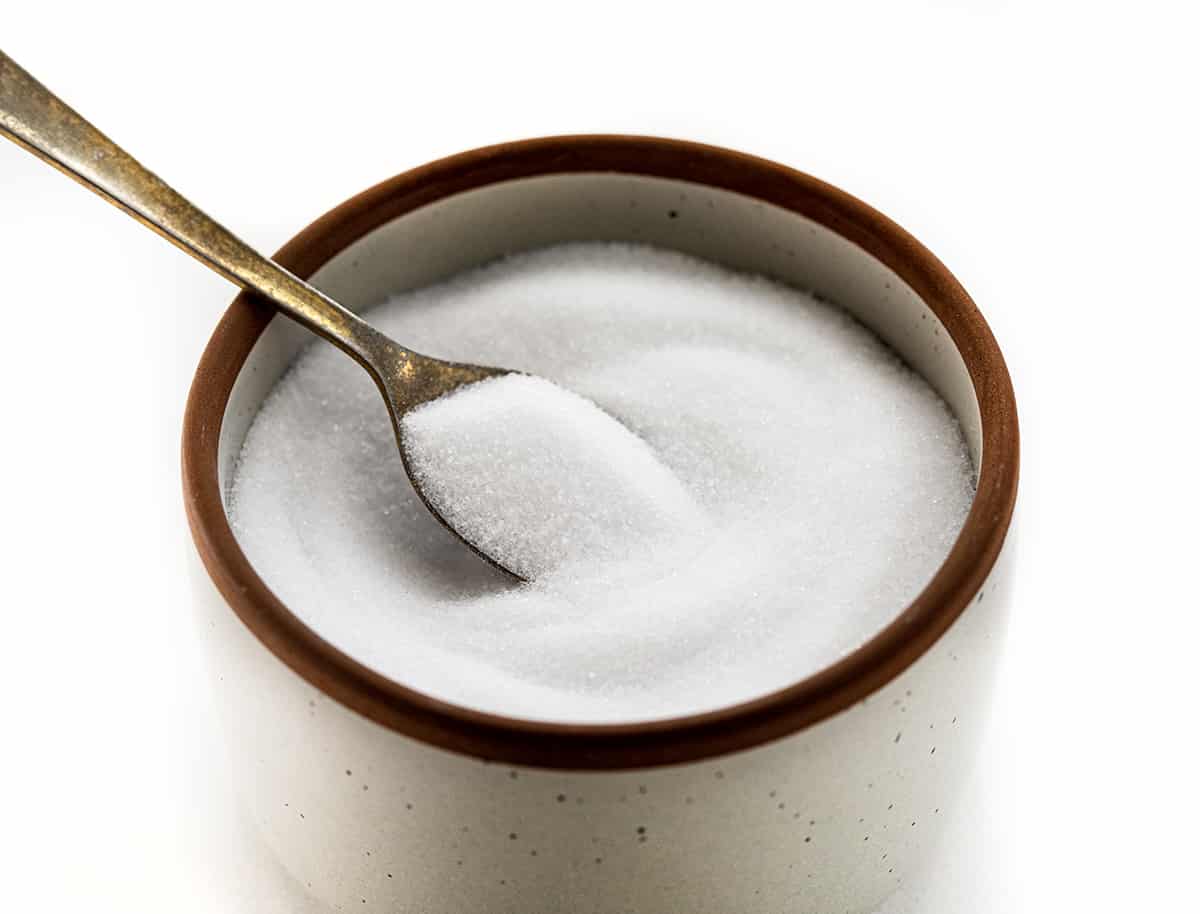
What is the Difference Between Kosher Salt and Table Salt?
While both kosher salt and table salt are types of salt used in cooking and baking, they have some key differences in texture, flavor, and cost.
- Texture: Kosher salt has a larger grain size when compared to table salt. The larger grain size makes it easy to get a pinch of salt. A pinch of kosher salt gives you less salt than a pinch of table salt because of the size difference.
- Flavor: Kosher salt has a less intense, milder flavor than table salt. Table salt, on the other hand, has a stronger salt flavor due to the presence of iodine and other additives.
- Cost: Kosher salt is slightly more expensive than table salt. Kosher salt is approximately $3.50 for 48 ounces and table salt is about $3.00 for 52 ounces. (prices may vary)
They should not be used interchangeably in recipes.
Is Table Salt Necessary for Iodine Intake?
While iodized table salt provides a convenient method of increasing your iodine consumption, it is not the sole source of this nutrient. In fact, it is entirely feasible to fulfill your iodine requirements without ingesting iodized salt.
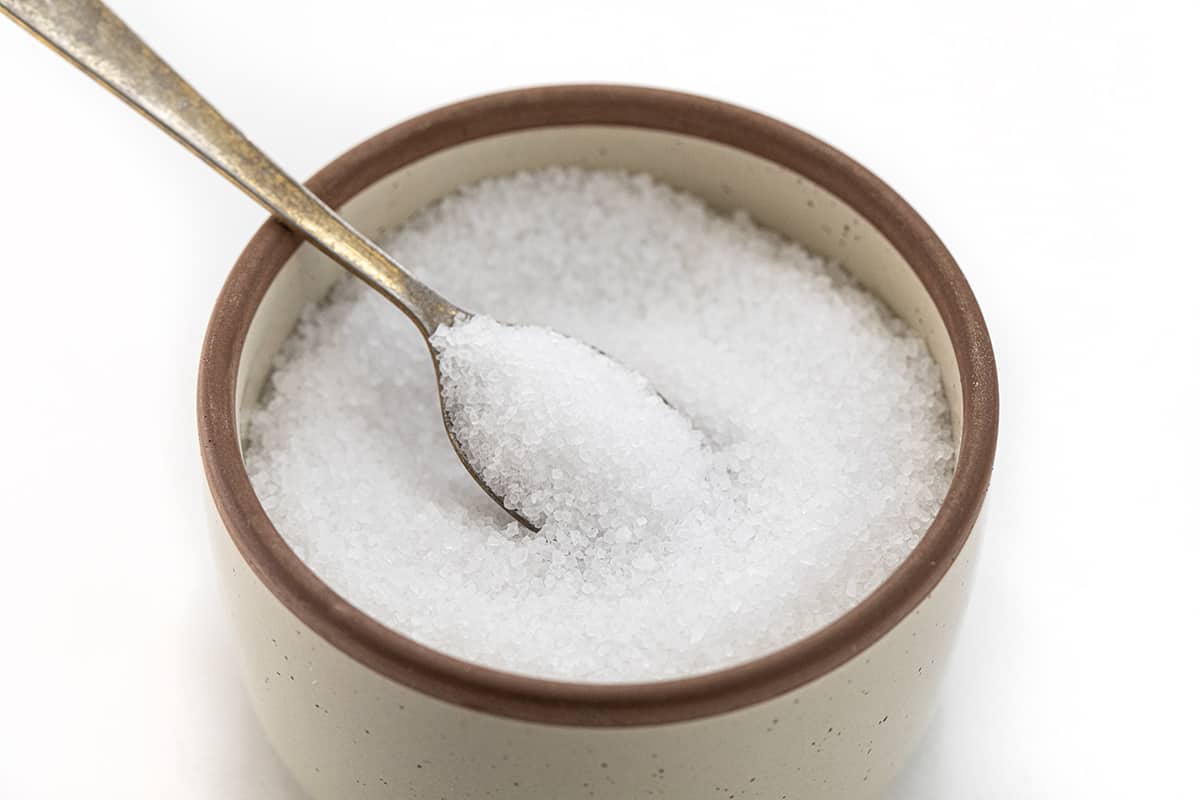
What is Sea Salt?
Another type of salt you will find on the shelves of your grocery store is sea salt. Sea salt is a type of unrefined salt that is harvested directly from the ocean or other bodies of salt water. Then, the wind and the sun work their magic to evaporate the water naturally. This means that it often contains trace amounts of minerals like magnesium, calcium, and potassium, which can affect its flavor and nutritional profile. Sea salt can be of different shapes and sizes, like little grains or big flakes, and it’s used in cooking, baking, and seasoning. Maldon Salt is a gourmet sea salt that has grown in popularity because of its distinctive pyramid salt flakes and its clean flavor. It is harvested in the English town of Maldon in Essex, England.
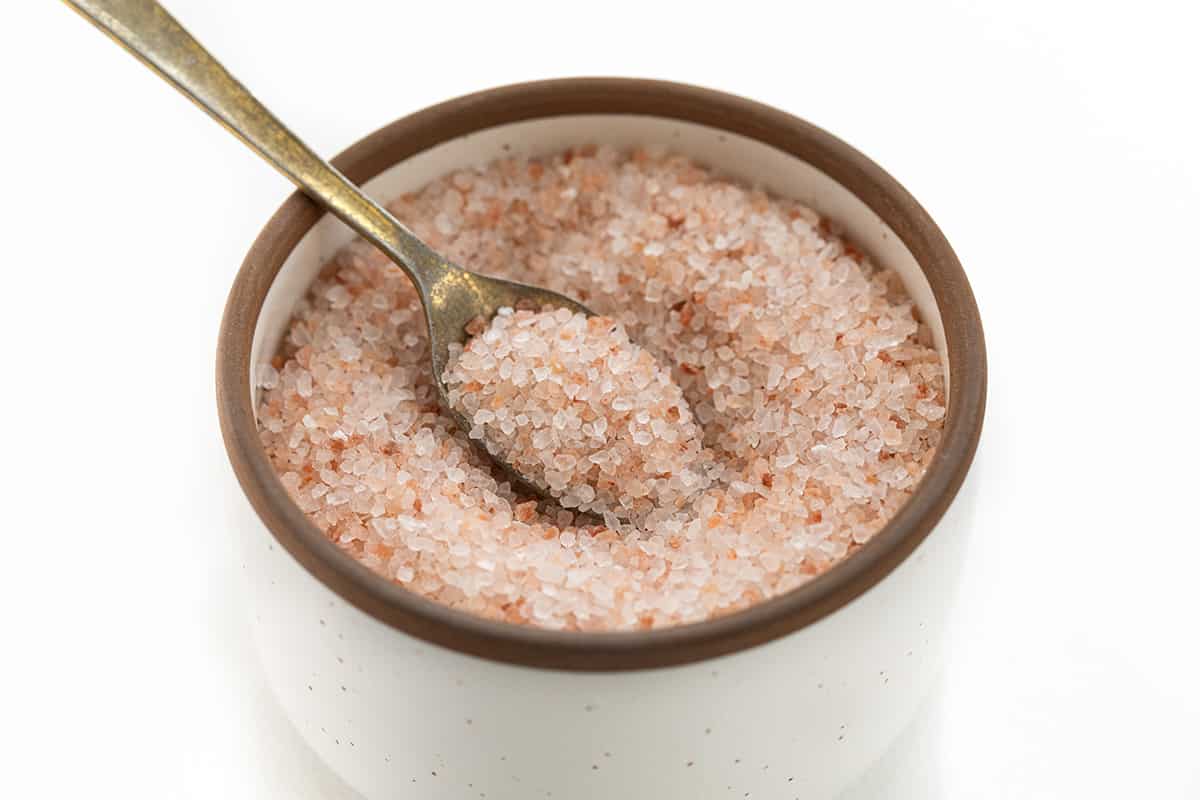
Himalayan Pink Salt
Himalayan Pink Salt is a type of rock salt that easily substitutes for table salt and is a very versatile salt. However, it is unrefined and contains beneficial minerals that give the salt its characteristic pink color. It is mined from the Khewra Salt Mine in the Punjab region of Pakistan, which is located at the foothills of the Himalayas. Himalayan pink salt has become increasingly popular in recent years, and not only for cooking and baking. It is also used in natural beauty products like salt scrubs and bath salts.
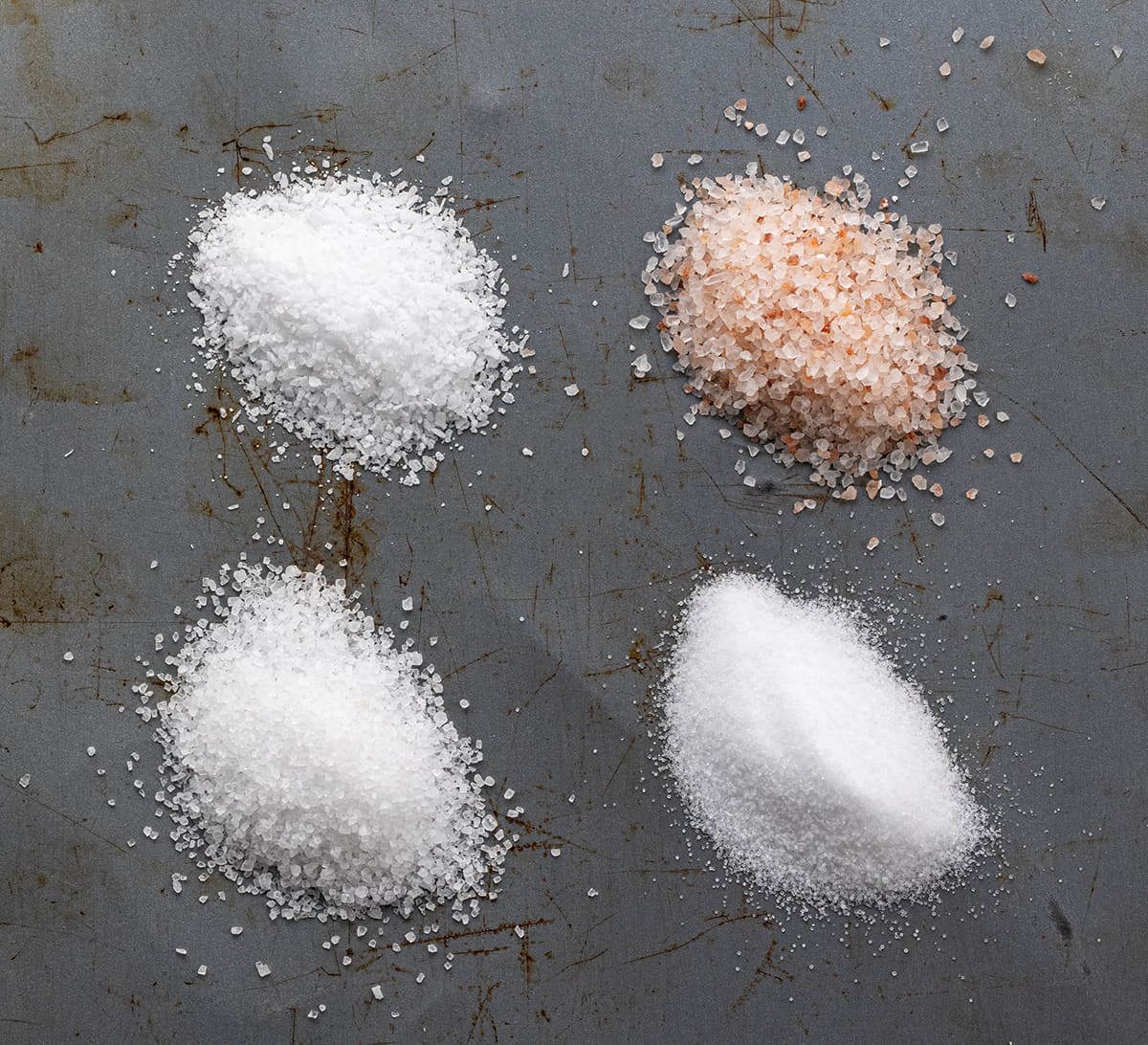
Substitutions for Kosher Salt
If you don’t have kosher salt on hand for your baking recipe, you can try substituting it with other types of salt. Here are a few options:
- Table salt: This is the most common type of salt and is the closest in texture to kosher salt. However, table salt is more heavily processed and has a more intense saltiness, so you’ll want to use about 50% less table salt than the amount of kosher salt called for in the recipe.
- Sea salt: As with table salt, you’ll want to use slightly less sea salt than the amount of kosher salt called for in the recipe.
- Himalayan pink salt: This is a type of salt that has become more popular in recent years. You can use it as a substitute for kosher salt in a 1:1 ratio.
Keep in mind that the type of salt you use can affect the taste and texture of your baked goods. If you do need to substitute salt, it’s a good idea to start with a smaller amount and adjust as necessary to ensure the right level of saltiness in your finished product.
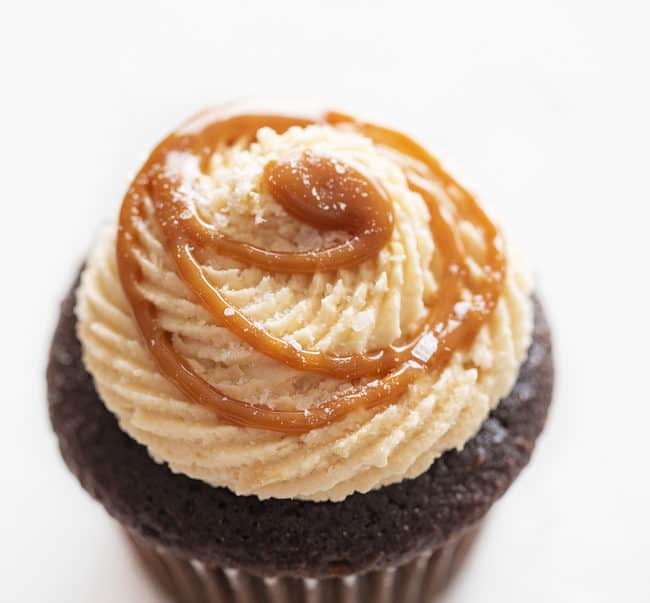
The Role of Salt in Baking Cakes
Salt is an important ingredient in baking cakes, and it serves multiple purposes. First and foremost, salt enhances the flavor of the cake by balancing the sweetness of the batter. It also strengthens the batter by helping to develop gluten, which gives the cake its structure and stability. This is particularly important for cakes that require a lot of mixing, such as pound cakes.
That said, it’s important not to go overboard with the salt. Using too much can overpower the sweetness of the cake and create an unpleasant taste. A good rule of thumb is to use 1/4 to 1/2 teaspoon of salt per cup of flour in your cake recipes.
Now that you know why I use Kosher Salt in (almost) all my baking recipes, please let me share with you my favorite bagel of all time, the Salt Bagel! It makes the perfect sandwich!
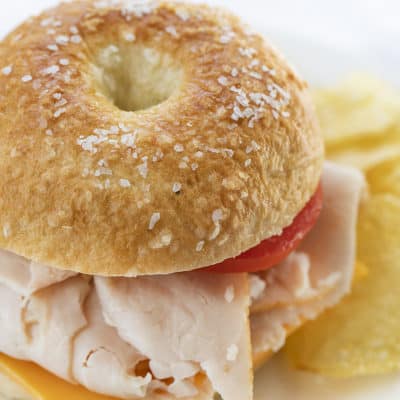
Salt Bagels
Ingredients
Bagels
- 1 ¼ cups (296 g) warm water
- 1 tablespoon instant yeast
- 4 cups (508 g) bread flour
- 3 tablespoons granulated sugar
- 1 teaspoon kosher salt
- 2 tablespoons vegetable oil
Boiling and Baking Ingredients
- 4 quarts water
- 2 tablespoons honey
- 2 tablespoons yellow cornmeal
Topping
- 1 egg white
- 1 tablespoon water
- 2 tablespoons kosher or sea salt, (A larger flake salt is recommended. I do not recommend table salt for this recipe!)
Instructions
Bagel Dough
- In the bowl of a stand mixer, whisk together warm water and yeast. Rest for 5 minutes.
- Add in flour, sugar, salt, and vegetable oil.
- Mix on low with the dough hook until the dough starts to come together (about 8 minutes). If you don't have a dough hook, knead the dough by hand for about 25 minutes.
- Transfer the dough to a greased bowl. Cover with a kitchen towel and let rise for 2 hours or until the dough has nearly doubled in size.
- Turn the dough out onto a work surface.
- Divide the dough into 12 even pieces (about 3 ounces each).
- Working one piece at a time, fold the sides of the dough under to create a dough ball (top should be smooth).
- With the seam side down (on an unfloured surface), place your palm on top of the dough (your hand should be slightly cupped around the dough ball).
- Push down slightly (but firm and even) on the dough and roll the ball under your palm in a circular motion. Use the cupped sides of your hands to keep the dough centered in your palm. You may have to work the dough for a while, but eventually, it will come together and most of the lines and folds should have incorporated into the dough, forming a smooth dough ball.
- Place the dough balls on a baking sheet and cover with a kitchen towel.
- Rest for 15 minutes
- After resting, use your fingers to create a hole in the center of the dough balls, twirling the dough around your fingers until you form about a 2-inch hole.
Boiling and Baking
- Preheat oven to 425 °F.
- Line a separate baking sheet with parchment paper. Sprinkle evenly with cornmeal.
- Add the water and honey to a large pot. Bring it to a rolling boil.
- Reduce the heat slightly (still boiling) and add bagels in batches (3-4 at a time). Bagels should have room to expand and should not be overlapping at all.
- Boil for 1-2 minutes per side (the longer the boil the denser the bagel).
- Place boiled bagels on top of the cornmeal layer on your baking sheet.
- In a small dish, whisk together the egg white and water.
- Brush the tops of the boiled bagels with the egg wash and sprinkle each with salt. I use about 1 teaspoon of salt per bagel, but you can use less or more depending on tastes. I recommend starting smaller as you can always add more salt.
- Bake in the preheated oven until the bagels begin to brown, 15 to 20 minutes.
- Allow bagels to cool completely before cutting or storing.
Video
Did you make this recipe?
Thank you for making my recipe! You took pictures, right? Well go ahead and post them on Instagram! Be sure to mention me @iambaker and use the hashtag #YouAreBaker.

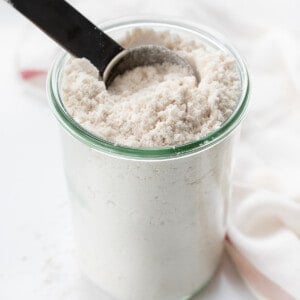
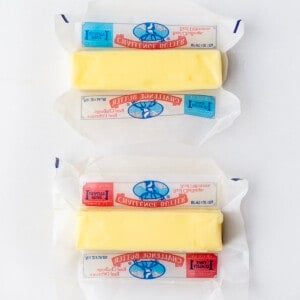









I always wondered why chocolate chip cookies tasted salty to me,Since I started using kosher salt they don’t.
Thanks for all the information about salt. I didn’t know. I love your recipes. Keep on sending them
Do you have a brand of kosher salt that you prefer? And, if so, why? Thank you.
You are just amazing on every recipe you’ve shared with us thank you 🙏🏼
Blessings
Tere
I use table salt to cook with but not baking because I thought the opposite it would be too salty. Do I need to grind it finer for baking to disperse through out the batter?